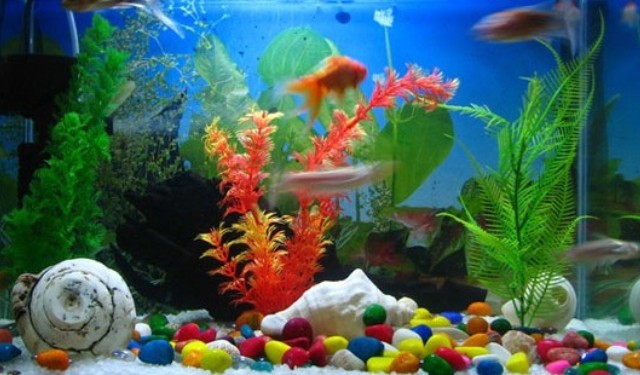Free shipping on orders over £50
TradeHURRY! SPRING SALE Now On! Get 10% Off Using Code KEEP10! Plus FREE SHIPPING On All Orders Over £50!
Aquaria Are Now Awash With Energy-Ef’fish’ient LED Lighting
 Running an aquarium can be quite an expensive hobby, and if you’re a tropical fish-lover, the costs can be even higher.
Running an aquarium can be quite an expensive hobby, and if you’re a tropical fish-lover, the costs can be even higher.
There’s the water filter and the heater, the gravel, the plants, not to mention the obligatory novelty, skull-shaped castle to think about, and that’s before you even buy the fish themselves!
Energy-Ef’fish’ency
No, they’re definitely not cheap to keep. But you wouldn’t even be able to see your beautiful tropical fish, were it not for the lighting, and that’s one area in which you can recoup at least some of the expenditure, thanks to energy-efficient LED lighting technology.
LED lighting is, quite possibly, the most energy-efficient light source available today. This makes LED lights absolutely perfect for applications that require a light to be switched on for a prolonged period of time. It’s no surprise, then, that more and more fish tank enthusiasts are turning to it to provide illumination for their beloved aquaria.
Normally, lighting an aquarium is a pretty costly business. It will require illumination for 12 hours out of every 24, and some even need to be lit for 24-hours every day.
Increased Longevity
Fortunately, LEDs not only have an incredibly long life-expectancy, they’re also hugely energy-efficient as well, costing a tiny fraction of an equivalently bright fluorescent light to run.
For example, an 8.5W, 0.5-metre LED Light Bar would be ideal to replace one of your fluorescent 50W tube lights. It has a life-expectancy of some 50,000 hours, which means that, if switched on for 12 hours a day, it will continue to provide your fish with light for 11.41 years.
Fluorescent tube lights, on the other hand, have an average life-expectancy of about 7000 hours, meaning they’ll burn out and need replacing after just a year-and-a-half.
So, during the lifetime of the LED light, you would’ve had to replace the fluorescent bulb seven times.
Money-Saving
This doesn’t even take into consideration the reduced inconvenience that changing an aquarium light source entails, never mind the amount of money you’ll save by replacing your wasteful fluorescent lighting with LED.
Assuming an electricity cost of 13.75 pence pre kW/h, with both types of light source run for the same duration of time, the 50W fluorescent bulb will burn up 219.00 kW/h of electricity and cost £30.11 to run.
The 8.5W LED, on the other hand, will use just 37.23 kW/h, costing only £5.12 to power, meaning a saving of £24.99 per year!
The aforementioned Light Bar has a relatively high IP (Ingress Protection)-rating which, at IP44 will withstand splashes of water from any direction.
However, for a truly waterproof replacement light source for your aquarium, there’s nothing better than a length of IP68 or IP68 Nano LED Strip Light.
With this type of LED light, you’ll enjoy all the previously mentioned benefits, but it will also provide you with some incredible, colour-changing lighting effects.
Whilst neither of these types of LED lighting is designed specifically for use in aquaria, they both also boast a high CRI level that’s very similar to actual fish-tank LED lighting. This means that the light they emit closely resembles that of natural daylight, thus enabling the human eye to perceive objects and colours in all their vibrant glory, as nature intended, you might say.
Should you require any assistance or advice with regard to illuminating a fish tank, or any other type of LED lighting, give the experts at Wholesale LED Lights a call on 0116 321 4120.
Or, if you’d prefer, you can send an e-mail enquiry to cs@wled.co.uk.






 Search
Search



2 Comments